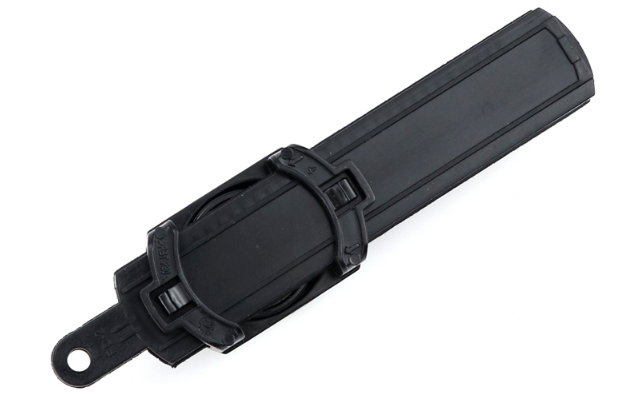Linear hydraulic dampers stand out as the perfect solution for achieving smooth deceleration in various applications, whether it involves opening or closing a door or raising or lowering an object, such as a car armrest.
These dampers facilitate precise control over the speed of moving components, effectively mitigating shocks and noise. By providing controlled deceleration, they play a vital role in extending the lifecycle of the product on which they are installed.
Linear dampers find application across a broad spectrum of smaller load scenarios.
Their unique operational method enables their use in situations where the load maintains continuous contact with the damper, as well as instances where contact is established after movement initiates. In both scenarios, linear dampers facilitate controlled and consistent deceleration.
Linear dampers and shock absorbers therefore differ in terms of the load, but whereas the shock absorber starts working when the load comes into contact with it, the linear damper works in both cases, with an obvious greater variety of possible uses.
The characteristics of the linear damper make it easy to integrate into the application, very versatile and cost-effective.

In a linear hydraulic damper, the kinetic energy of the moving object is transmitted through the steel rod to the valve housed within the damping cylinder. As the hydraulic fluid is forced through the valve, friction is generated. Upon the spring returning the valve to its original position, the hydraulic fluid flows back into the damping chamber.
Linear dampers function in a singular direction, as the viscous fluid only provides resistance in one direction.
For instance, when a cupboard door closes slowly, it commonly employs a linear damper for this purpose.
Industrial shock absorbers, on the other hand, typically employ a mechanical design comprising a piston, cylinder, and damping medium such as oil or elastomers. Upon impact, the piston compresses the damping medium, absorbing and dissipating kinetic energy to reduce the impact force transmitted to the load.
Linear Dampers:
Linear dampers, also known as hydraulic or viscous dampers, operate based on the principle of fluid resistance. They consist of a piston moving through a chamber filled with hydraulic fluid. When subjected to a force, the piston moves through the fluid, generating resistance that slows down the motion of the load.
Industrial Shock Absorbers:
Industrial shock absorbers, on the other hand, typically employ a mechanical design comprising a piston, cylinder, and damping medium such as oil or elastomers. Upon impact, the piston compresses the damping medium, absorbing and dissipating kinetic energy to reduce the impact force transmitted to the load.
Linear Dampers:
Linear dampers are commonly used in applications involving smaller loads and lower impact forces. They excel in situations where controlled deceleration is required, such as in the closing of doors, lids, or drawers. Their ability to provide consistent damping across a wide range of velocities makes them suitable for applications where precise motion control is essential.
Industrial Shock Absorbers:
Industrial shock absorbers are designed to handle higher impact forces and larger loads compared to linear dampers. They are commonly employed in applications involving heavy machinery, robotics, and material handling equipment. Industrial shock absorbers are capable of dissipating large amounts of kinetic energy, thereby protecting equipment and improving safety in high-impact scenarios.
When deciding between linear dampers and industrial shock absorbers, several factors need to be taken into account:
1. Load Characteristics: Consider the size, weight, and impact forces exerted by the load.
2. Operating Conditions: Evaluate the velocity, frequency, and environmental factors of the application.
3. Space Constraints: Assess the available space for installation and the size of the damping device.
4. Cost and Maintenance: Compare the initial cost and ongoing maintenance requirements of each solution.
Selecting between linear dampers and industrial shock absorbers ultimately depends on the specific requirements of the application. For applications involving smaller loads and controlled deceleration, linear dampers offer an effective and economical solution. Conversely, for environments with larger loads and higher impact forces, industrial shock absorbers provide superior performance and durability.
Copyright:@2020-2021
Comments Please sign in or sign up to post.
0
0 of 500 characters used